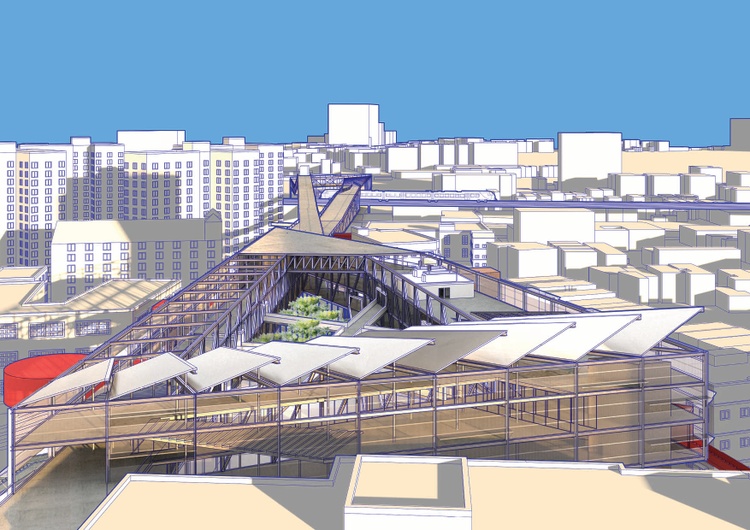Understanding the Collaborative Process In Between Engineers and Designers in Modern Building And Construction Projects
The collaborative procedure between designers and engineers is necessary in modern building and construction projects, as it balances layout intent with engineering usefulness. Exploring these characteristics reveals insights that can considerably affect project results and total industry requirements.
The Relevance of Collaboration
The collective harmony between architects and designers is crucial for the successful awareness of any kind of construction job. This collaboration unites distinct expertise and point of views, allowing the assimilation of innovative design with functional design remedies. By collaborating, designers and designers can make sure that a task not just meets aesthetic and functional demands however likewise complies with safety and security, sustainability, and financial constraints.
Collaboration fosters a shared vision, promoting the alignment of goals and assumptions from the start. This alignment is critical in addressing possible obstacles and mitigating dangers that could occur throughout the project lifecycle. In addition, a collective strategy permits the reliable allowance of resources, enhancing both time and expense.
The importance of collaboration reaches the repetitive procedure of layout and building and construction, where comments from engineers can inform building choices, resulting in more feasible and lasting styles. Conversely, engineers can motivate engineers to think artistically regarding how to attain structural integrity without endangering creative intent. Ultimately, the joint connection between designers and engineers is not just helpful; it is fundamental to the production of top notch, functional, and cutting-edge developed settings that satisfy the needs of culture.
Communication Methods and Tools
Effective interaction techniques and devices are important for cultivating collaboration in between architects and designers throughout the project lifecycle. Establishing clear networks of communication is crucial to guarantee that all group members are lined up with task goals, timelines, and duties. Regular conferences, both in-person and digital, offer possibilities for stakeholders to discuss development, address concerns, and make notified choices.
Utilizing project administration software, such as BIM (Building Info Modeling) systems, enhances partnership by making it possible for real-time sharing of style adjustments and technological specifications. These tools assist in openness, permitting architects and engineers to picture adjustments and analyze their effect on the general job.

Shared Objectives and Job Vision

Developing shared goals involves open dialogue and a detailed understanding of each self-control's payments. Engineers commonly focus on design intent, spatial connections, and user experience, while designers highlight architectural stability, systems functionality, and compliance with guidelines (cda architects). When these viewpoints are lined up, the outcome is a cohesive task that follows both imaginative desires and technological expediency
Furthermore, a distinct task vision fosters liability among employee, encouraging each individual to take possession of their role in accomplishing the wanted outcome. Regular check-ins and collaborative workshops can better enhance this commitment, permitting changes to be made as the task advances. Inevitably, a shared vision not only boosts synergy yet also elevates the high helpful site quality of the final deliverable, bring about successful project conclusion.
The Function of Innovation
Leveraging technology has come to be crucial in improving cooperation between architects and engineers. Structure Information Modeling (BIM) stands out as a crucial technology, permitting both engineers and engineers to produce in-depth 3D versions that envelop layout intent and architectural stability.
Additionally, cloud-based systems allow smooth cooperation, allowing project stakeholders to access and upgrade project information from anywhere. This cultivates a society of openness and accountability, as modifications can be tracked and examined in real-time. Furthermore, mobile applications further enhance interaction, supplying on-site teams with instant access to project specs and updates.
Arising technologies such as expert system and machine knowing are also starting to play a duty in predictive evaluation, assisting teams recognize prospective view it concerns before they develop. Ultimately, the duty of innovation in architecture-engineering cooperation not only enhances process performances yet likewise boosts innovation, resulting in even more effective job outcomes. By embracing these technical developments, engineers and designers can ensure a more natural and productive collaborative procedure throughout the building lifecycle.
Study in Successful Collaborations
Various study illustrate the profound influence of efficient partnerships between engineers and engineers on task end results. One remarkable instance is the collaboration on the High Line in New York City, where landscape engineers, designers, and metropolitan planners interacted to change an abandoned rail line right into a vivid public park. This multidisciplinary technique not only boosted the aesthetic quality but likewise ensured structural security and ecological sustainability.
One more exemplary instance is the design and building and construction of the Sydney Opera Home. The collaboration in between engineer JÃ ¸ registered nurse Utzon and structural designer Ove Arup exhibited cutting-edge analytic. Their partnership enabled the iconic shell-like style while resolving complicated engineering difficulties, ultimately causing a timeless building work of art.
The Burj Khalifa in Dubai additionally demonstrates the value of collective initiatives. cda architects. The assimilation her latest blog of architecture and engineering expertise made it possible for the task group to attain extraordinary elevations while sticking to safety and security policies and visual vision
These instances emphasize the significance of communication, trust fund, and shared objectives. In today's intricate building atmosphere, such partnerships are essential to browsing difficulties and supplying projects that meet both practical and visionary objectives.
Final Thought
In verdict, the partnership between architects and designers is necessary for the success of modern-day building and construction tasks. Reliable interaction strategies, a common job vision, and the integration of sophisticated modern technologies are critical components that promote this partnership.